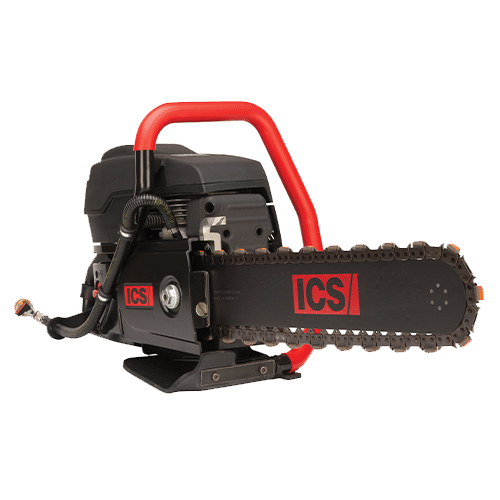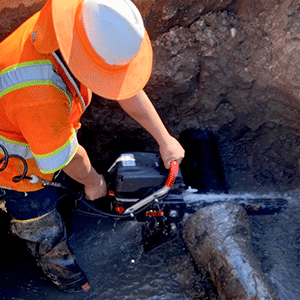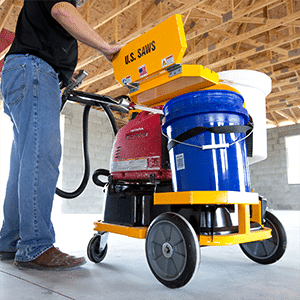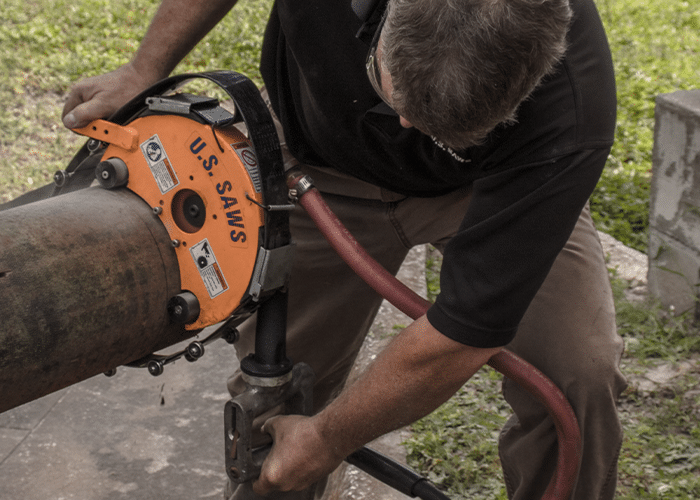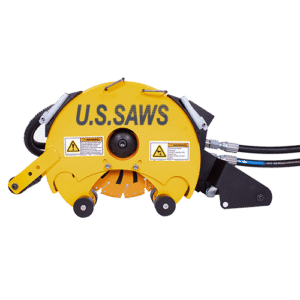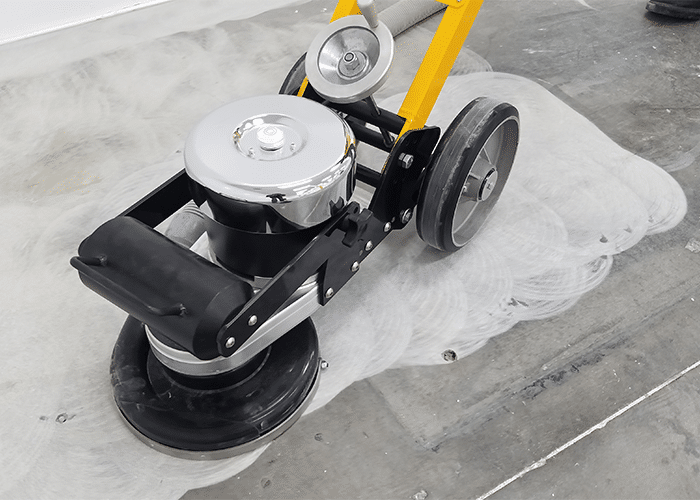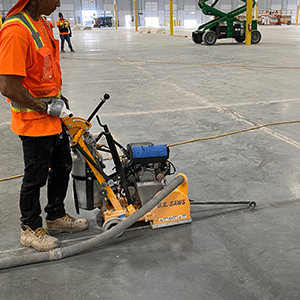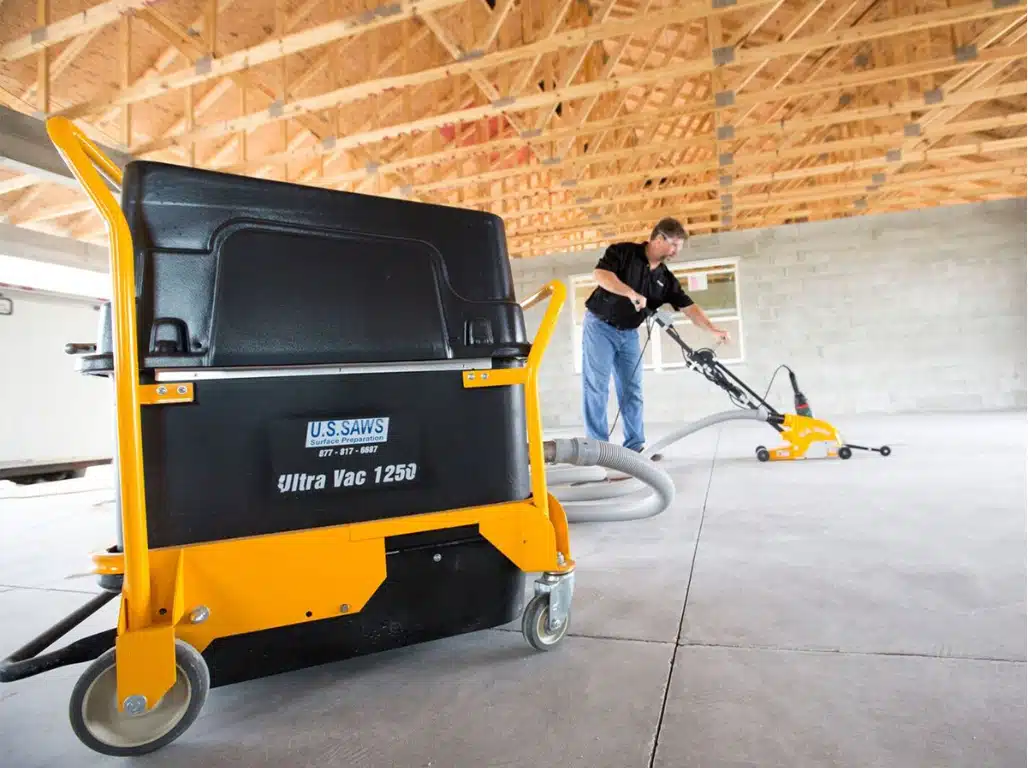Chainsaws are not toys. They are serious tools with serious repercussions when mishandled. Chainsaw injuries come in all shapes and sizes, from lacerations to the arms and legs to kickbacks to the chest or head. No matter the form of injury, chainsaw injuries may be life threatening. The best way to ensure you make it through your project unscathed by a chainsaw is to use proper safety gear and take other sensible precautions to reduce the possibility of causing harm to yourself.
Fortunately, chainsaw manufacturers, like U.S. SAWS, have been working to improve chainsaw safety options as well as educating users through owner’s manuals and operating guides to include instruction for proper use and proper safety measures while using your chainsaw. Chainsaws have included safeguards, such as the automatic chain brake, to reduce the occurrence of kickbacks. Kickbacks are one of the most disastrous chainsaw hazards, and occurs when the chainsaw guidebar suddenly pushes upwards, typically aiming towards the users head or chest. No matter the safety improvements made to chainsaws, it is always best practice to adhere to the manufacturer’s safety guidelines.
Below are four key recommended safety measures to take to keep yourself in one piece when handling a chainsaw.
Dress for Success
Learning how to use a chainsaw safely starts with the right protective clothing. Step one is ensuring you have comfortable, breathable clothing that allows you freedom of movement, but is not baggy. Overly baggy clothing risks getting caught in the chainsaw.
Typically jobs that require chainsaws usually come with flying debris, which can be hazardous to your hands and your eyes. Proper fitting gloves are essential. Gloves not only help protect from flying debris, but also help ensure you do not lose a finger in the event of a kickback. Safety glasses are also imperative to avoid potential debris. Regular eyeglasses or sunglasses leave open gaps on the side that allow debris to potentially become lodged in your eyes, which in turn, may cause permanent damage to your vision. It is always best practice to utilize safety glasses in these situations.
Foot protection is necessary too. Steel-toed boots with protective fabrics are the go to in this industry. This heavy duty footwear protects the user from falling branches and even from that accidentally dropped chainsaw. This type of footwear also comes in waterproof rubber for those wet cuts that require immersion in water.
Leg protection is equally as important. Chainsaw chaps are leg protectors that are made out of Kevlar and work to deflect any accidental interaction with the chainsaw. These protective coverings come with a variety of options to ensure you have the right gear for the proper conditions, including oil resistance and water resistance. Many even come with open backs to provide breathability for your legs. Chain saw jackets also operate in the same way as chainsaw chaps, protecting the chest area from the potentially traumatic effects of a kickback accident.
Helmets provide excellent protection for heads, and many come with visors that may provide an adequate replacement for safety goggles as a two in one piece of safety gear. Helmets are critical to reducing the damage from an errant kickback.
Finally, ear protection is a must. Chainsaws are loud. It is recommended that when exposed to noise levels above 85dB for an extended period of time, ear protection is required to prevent hearing loss. While gas chainsaws are the loudest, many times electric and battery powered chainsaws can reach levels that will also cause damage to the ears. Two options for ear protection include (1) in ear protectors, like earplugs, and (2) over the ear protectors which cover the entire ear area.
Get a Grip and Stay Grounded
Maintaining perfect form is not just for Olympians. It is also key to properly and safely using a chainsaw. Ensuring you have the right stance with the right grip on the chainsaw allows you to reduce your exposure to dangerous situations. Chainsaws are heavy, and maintaining your balance helps keep your arms and legs from rapidly wearing out. Keep a steady grip on the front and rear handles with your stance wide and with staggered feet. Ensure the thumb of your left hand remains under the front handle. This will reduce kickbacks. Remain on steady ground. Standing on ladders or rocks will throw you off balance and increase the potential for injury.
Maintenance Is Key
Properly maintaining your chainsaw is another vital component to chainsaw safety. Always make sure your chain is sharpened. Sharpened chainsaws are more efficient at cutting, and dull chainsaws have a greater chance of causing kickback. Make sure you are using a chainsaw that is sized properly for the job. Guidebars come in different sizes and are made to work within the parameters of their sizing. Cutting large branches with a small guidebar is never a good idea. Cleaning debris out of the saw after each use is important in preventing unnecessary wear and tear on the chainsaw. Unnecessary wear and tear opens the chainsaw up to malfunctions which can cause serious injury. Keeping the chain and guidebar lubricated are critical to the well-being of your chainsaw. If the chain and bar are not properly lubricated, friction builds, which can cause the chainsaw to overheat and may cause accidental burns to the user. Ensuring the chain has proper tension with the right lubrication and sharpness is also key in preventing kickbacks.
Remember Emissions
While lacerations and amputations are the most widely known hazards of chainsaw use, chainsaw emissions can cause real damage as well. While gasoline powered chainsaws may be the most powerful on the market, they come with a danger of their own. Toxic gases, such as carbon monoxide, are emitted during the use of gas powered chainsaws. It is imperative that these chainsaws are not used in close quarters or indoors. Carbon monoxide poisoning is dangerous. Exposure to carbon monoxide may result in nausea, vomiting, increased heart rate, impaired judgment, shortness of breath and even loss of consciousness. If the project that needs completing is scheduled to be done indoors or in tight quarters, it would be best to locate a chainsaw that requires alternative power sources such as battery operated chainsaws.
Learning how to use a chainsaw and maintaining proper chainsaw safety precautions may seem overwhelming, but it does not have to be. Contact U.S. SAWS today to determine the best chainsaws and protective gear to use for your project.
